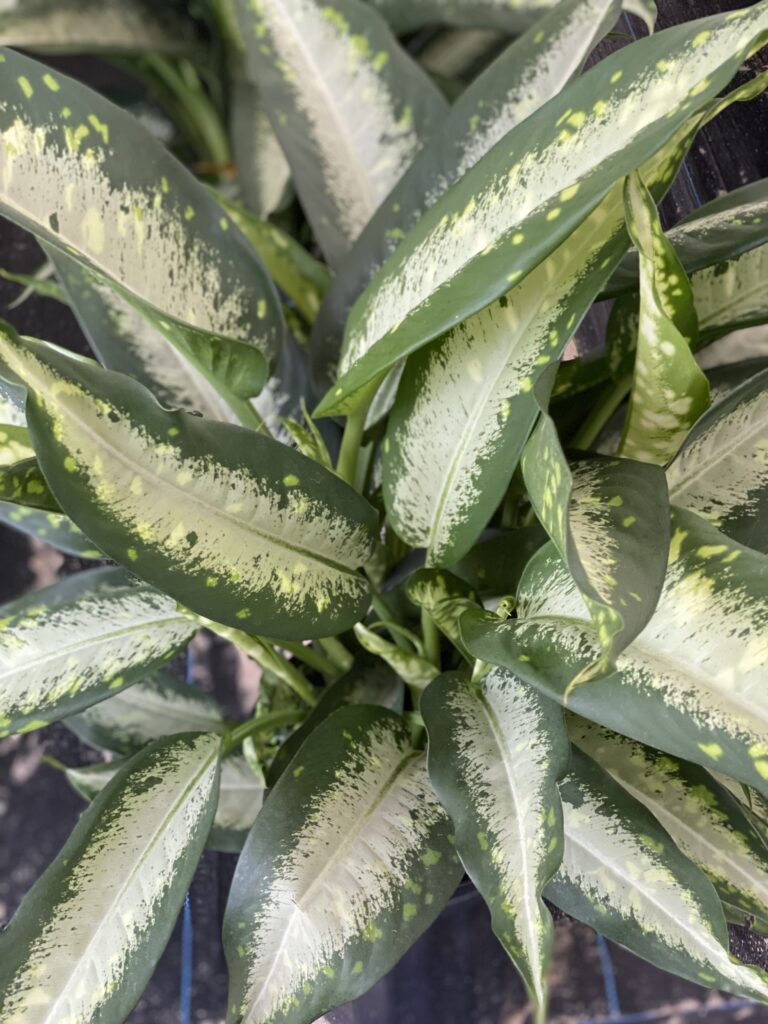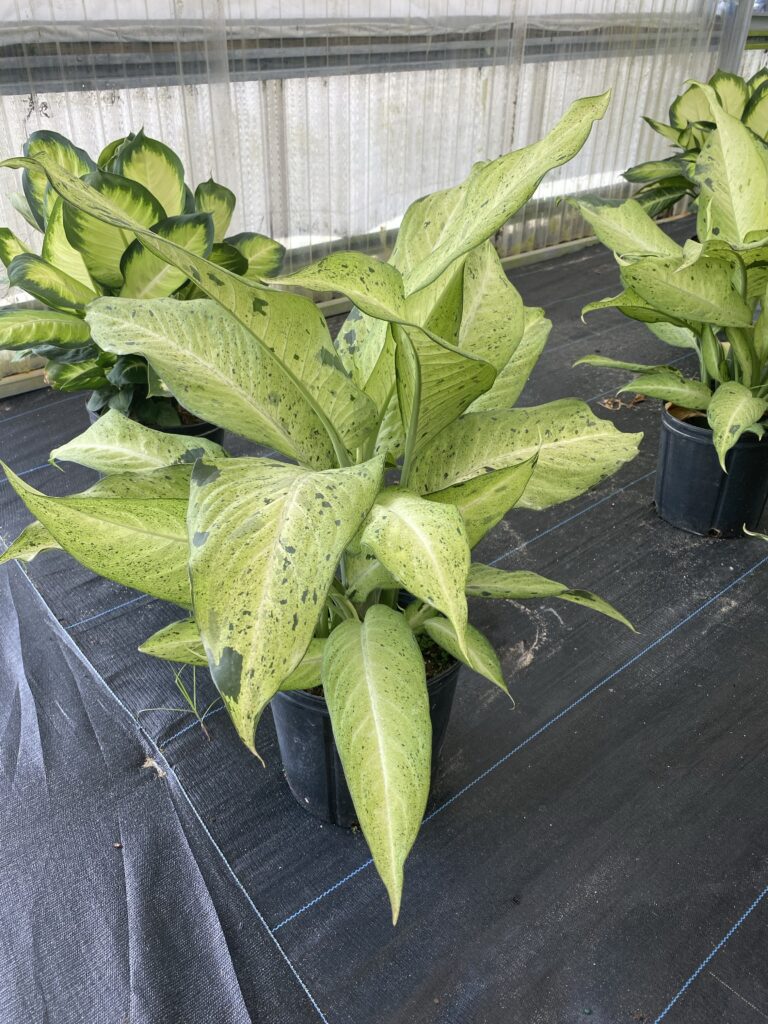

Dieffenbachia seguine, commonly known as Dumb Cane, is a popular houseplant known for its attractive foliage and ease of care.
We offer these varieties in 3”, 4”, 8”, 10” and 12” pot sizes.
Here’s a detailed guide about Dumb Cane plants:
Appearance
Leaves: Dumb Canes have large, broad leaves that are typically green with creamy or yellowish variegation. The leaves are often oval or lance-shaped and can grow quite large.
Growth: It has a bushy, upright growth habit, and can grow to about 3-6 feet tall indoors. In its natural habitat, it can grow even taller.
Care Tips
Light: It thrives in bright, indirect light but can tolerate lower light conditions. Direct sunlight can scorch the leaves, so it’s best to keep it out of harsh, direct sun. It can also adapt to fluorescent light, making it suitable for indoor environments.
Watering: Keep the soil consistently moist, but not soggy. Water when the top inch of soil feels dry. Overwatering can lead to root rot, so ensure the pot has good drainage. In winter, reduce watering frequency as the plant’s growth slows down.
Soil: Use a well-draining potting mix. A standard houseplant mix or one blended with perlite or sand for extra drainage works well.
Temperature: Dieffenbachia seguine prefers temperatures between 60-75°F. It doesn’t tolerate frost and should be kept away from cold drafts.
Humidity: It enjoys higher humidity but generally adapts to average indoor humidity. To boost humidity, you can mist the leaves regularly or place a humidity tray nearby.
Fertilizing: Feed with a balanced, water-soluble fertilizer every 4-6 weeks during the growing season (spring and summer). Reduce or stop feeding in the fall and winter when growth slows.
Repotting: Repot the plant every 1-2 years or when it outgrows its container. Spring is the best time for repotting.
Pruning: Prune as needed to remove yellowing or damaged leaves. You can also trim back leggy growth to encourage a bushier appearance.
Pests and Problems: Watch for common pests like spider mites, aphids, and mealybugs. Dieffenbachia can also be prone to issues like leaf drop if it’s not getting enough light or if there are fluctuations in watering. Yellow leaves can indicate overwatering or poor drainage.
Toxicity
Dieffenbachia seguine is toxic if ingested, so keep it away from pets and small children. The plant contains calcium oxalate crystals, which can cause irritation to the mouth, throat, and digestive tract.
With these care tips, Dieffenbachia seguine can be a vibrant and striking addition to your plant collection!
If you have any questions, or are interested in purchasing, feel free to come by the nursery or give us a call at (352)735-8350. Our inventory is also available to see online.
